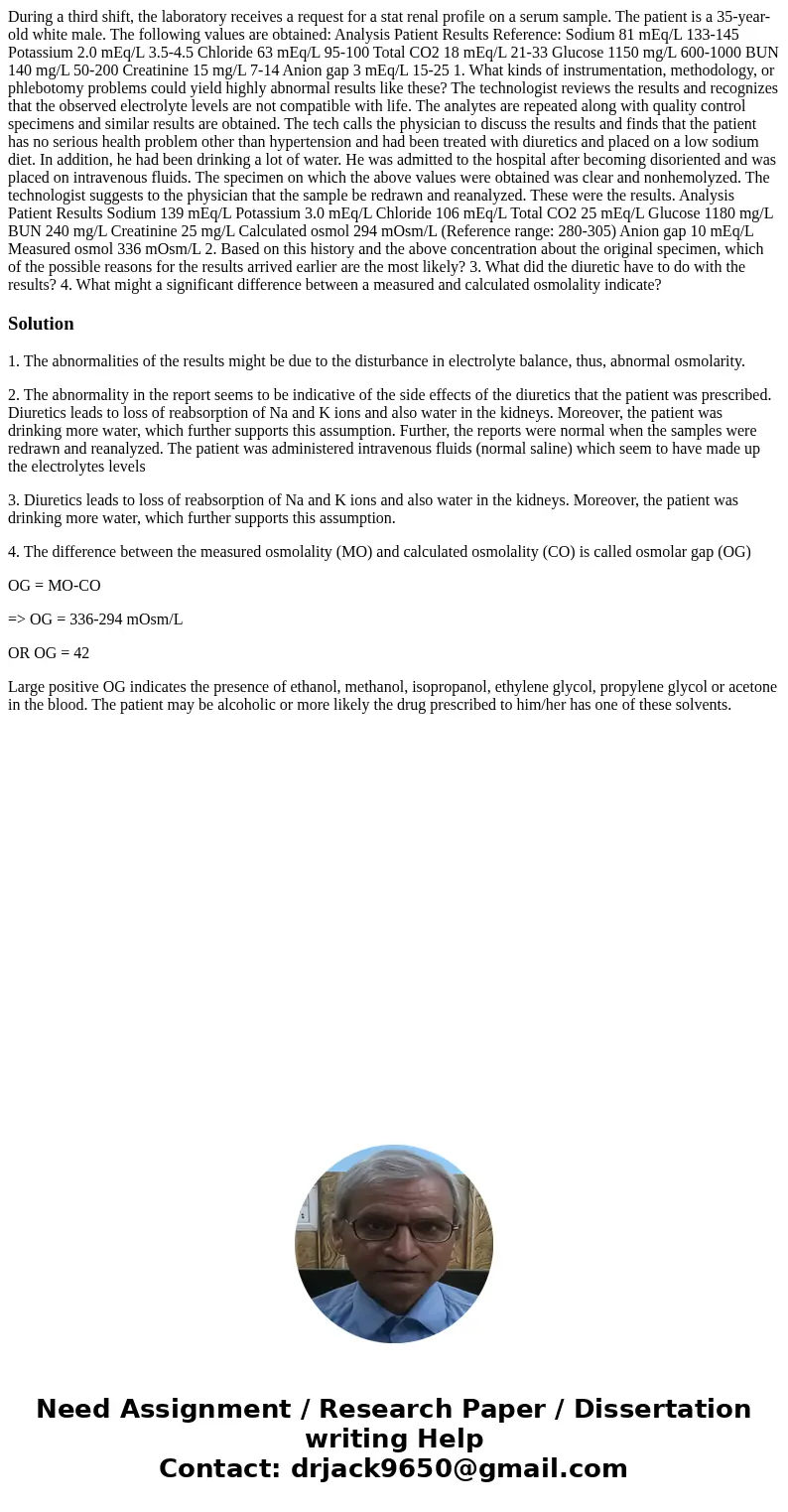During a third shift the laboratory receives a request for a
During a third shift, the laboratory receives a request for a stat renal profile on a serum sample. The patient is a 35-year-old white male. The following values are obtained: Analysis Patient Results Reference: Sodium 81 mEq/L 133-145 Potassium 2.0 mEq/L 3.5-4.5 Chloride 63 mEq/L 95-100 Total CO2 18 mEq/L 21-33 Glucose 1150 mg/L 600-1000 BUN 140 mg/L 50-200 Creatinine 15 mg/L 7-14 Anion gap 3 mEq/L 15-25 1. What kinds of instrumentation, methodology, or phlebotomy problems could yield highly abnormal results like these? The technologist reviews the results and recognizes that the observed electrolyte levels are not compatible with life. The analytes are repeated along with quality control specimens and similar results are obtained. The tech calls the physician to discuss the results and finds that the patient has no serious health problem other than hypertension and had been treated with diuretics and placed on a low sodium diet. In addition, he had been drinking a lot of water. He was admitted to the hospital after becoming disoriented and was placed on intravenous fluids. The specimen on which the above values were obtained was clear and nonhemolyzed. The technologist suggests to the physician that the sample be redrawn and reanalyzed. These were the results. Analysis Patient Results Sodium 139 mEq/L Potassium 3.0 mEq/L Chloride 106 mEq/L Total CO2 25 mEq/L Glucose 1180 mg/L BUN 240 mg/L Creatinine 25 mg/L Calculated osmol 294 mOsm/L (Reference range: 280-305) Anion gap 10 mEq/L Measured osmol 336 mOsm/L 2. Based on this history and the above concentration about the original specimen, which of the possible reasons for the results arrived earlier are the most likely? 3. What did the diuretic have to do with the results? 4. What might a significant difference between a measured and calculated osmolality indicate?
Solution
1. The abnormalities of the results might be due to the disturbance in electrolyte balance, thus, abnormal osmolarity.
2. The abnormality in the report seems to be indicative of the side effects of the diuretics that the patient was prescribed. Diuretics leads to loss of reabsorption of Na and K ions and also water in the kidneys. Moreover, the patient was drinking more water, which further supports this assumption. Further, the reports were normal when the samples were redrawn and reanalyzed. The patient was administered intravenous fluids (normal saline) which seem to have made up the electrolytes levels
3. Diuretics leads to loss of reabsorption of Na and K ions and also water in the kidneys. Moreover, the patient was drinking more water, which further supports this assumption.
4. The difference between the measured osmolality (MO) and calculated osmolality (CO) is called osmolar gap (OG)
OG = MO-CO
=> OG = 336-294 mOsm/L
OR OG = 42
Large positive OG indicates the presence of ethanol, methanol, isopropanol, ethylene glycol, propylene glycol or acetone in the blood. The patient may be alcoholic or more likely the drug prescribed to him/her has one of these solvents.

 Homework Sourse
Homework Sourse